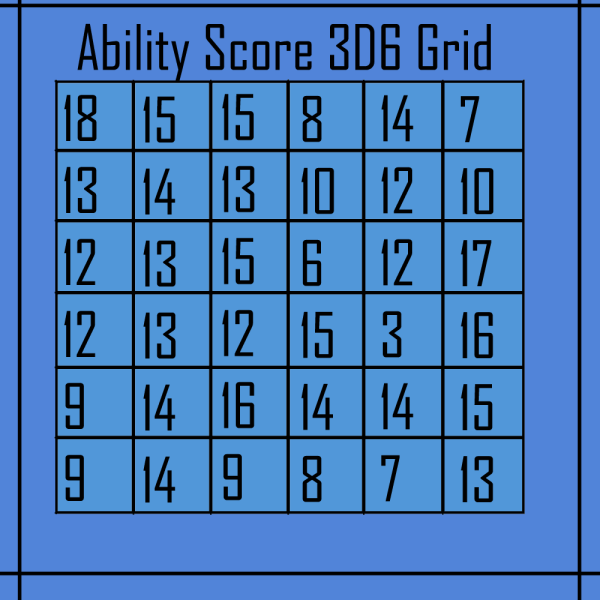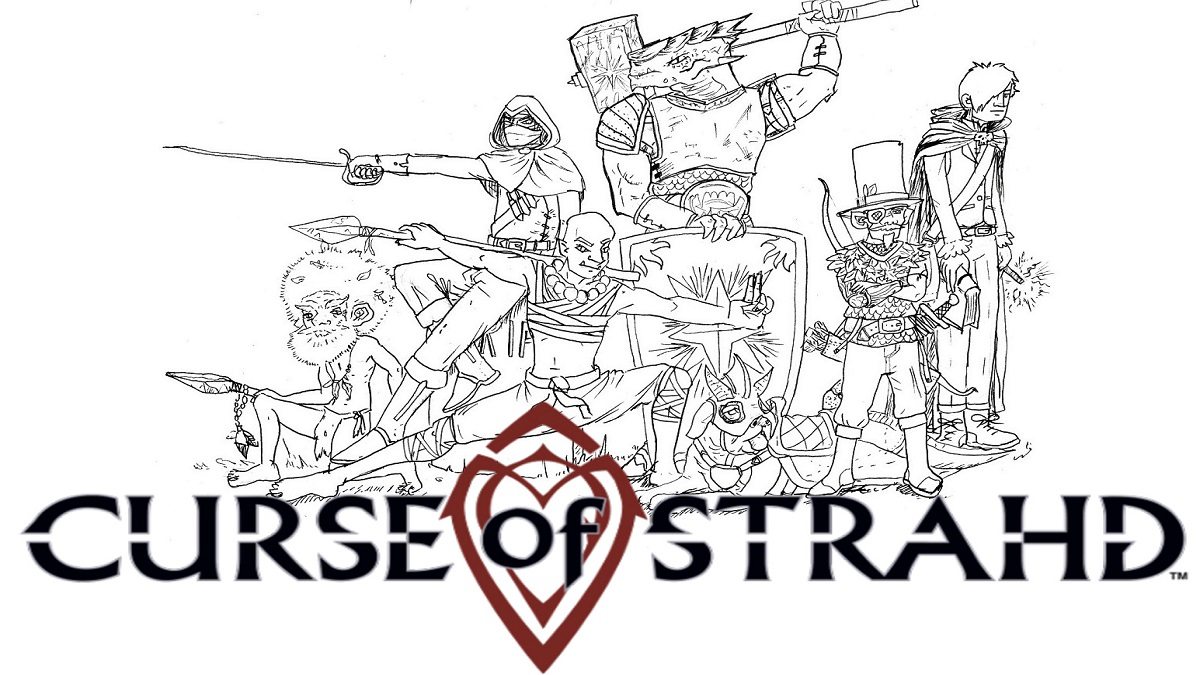For over 40 years, players have been assigning stats to their D&D characters. As I described in the second article in this series, ability scores define a character’s aptitude in a number of ways. Everything from combat to commerce is affected by the player’s stats. But in that 40 years, an ongoing (and often vehement) argument has developed. What is the best way to determine a character’s ability scores?
In the current edition of D&D, there are three ways to determine ability scores:
Rolling Dice (or 4D6 Drop)
The primary method described by the Player’s Handbook reads:
“You generate your character’s six ability scores randomly. Roll four 6-sided dice and record the total of the highest three dice on a piece of scratch paper. Do this five more times, so that you have six numbers.”
Once the six scores are recorded, players assign them as they like. Using this method, players will get an average of 12.5. Surprisingly, this is the method I’ve seen used the least, because players often hesitate to randomly determine their ability scores. This is because it is absolutely possible to roll more than one score under 8, which can be quite a handicap. On the other hand, this is the only way to get scores over 15, so it is used by some.
Standard Array
The default method in the Player’s Handbook for players who don’t like to roll randomly, or just don’t want to spend time rolling dice and adding scores, is the standard array. The standard array is 15, 14, 13, 12, 10, 8. Just like the dice-rolling method, players assign these six scores however they like. This method gives an average score of 12, and players will never have a score below 8, or more than one score under 10.
Point Buying
The only variant in the Player’s Handbook is the point-buy system. With this system, players start with six scores of 8, and 27 “points” players can spend these points to upgrade their scores. This allows a lot of variability for players, without many low scores, but it comes at a cost: You cannot buy scores higher than 15. The scores here range from 11.5 to 12.5, with an average of 12.
Alternatives:
Now, some people just don’t like any of these options, and want something different. This can be because they want higher bonuses, or a more immersive feel to their character creation. Here are some common alternatives:
4D6 Drop — Reroll 1s
With this method, players roll 4 dice, and record the highest three, with a twist: Players always reroll any result of 1. This method means that it’s impossible to get a score lower than 6, with an average score of 13.2. This is 0.7 higher than the regular 4D6 Drop, and 1.2 higher than the standard array.
This method is very popular with groups that focus heavily on min/maxing – that is, optimizing advantages, while minimizing weaknesses.
4D6 Drop — Roll 7 Drop
With this method, players use the standard 4D6 Drop, but roll seven times, and drop the lowest score. This slightly boosts the average over the regular 4D6 Drop, but mostly gives players an out if they roll an unfortunate score.
Hardcore
With this method, players roll only 3D6, with no re-rolls, no drops, in order. Players roll Strength first, Dexterity second, and so on. This method creates characters with definite strengths and weaknesses. Often, this is combined with a randomly rolled race. Players then evaluate their character and choose the class best suited to their character. This is a great option for simulating real adventurers. After all, nobody is given the chance to decide their abilities at any point in their lives.
3D6 Grid
The 3D6 grid is one I’d never heard of before an article I found on RuneCarver while back. I love this method to bits. It gives characters meaningful choices as part of the process. Check out the grid below:

With this method, roll 4D6 Drop until you have 36 numbers, filling them up by rows. Players then choose one of these arrays. The can choose a row from left to right, or right to left, or a column from top to bottom, or bottom to top. This gives 24 arrays for players to choose from. This example array gives scores from 7 to 18. The average scores of each row or column range from 10 to 13.6.
Now, most players aren’t going to choose the bottom row, which is has an average score of 10. But you’d be surprised at what your players might choose. The first Row, for example, might appeal to many players, but it actually has an average score of 12.8. The fifth row, on the other hand, features only one score below 14, and has an average score of 13.6!
With this grid, players wanting the highest possible Strength or Charisma stat might go for the first row, a taking the hit to their average.
Players wanting balanced statistics, however, would gravitate to fifth row.
Players who are planning to use racial bonuses will also consider other rows. The sixth column, for example, would work well for a Rock Gnome. After racial bonuses, that player would have an 18 in both Constitution and Intelligence, a great combination for Wizards who favor touch spells. They need the Intelligence for attacks, and Constitution gives them a higher max hit points.
Which method is best?
That’s a complicated question. There are a lot of factors that players and DMs might prioritize. Here are some parameters, but in the end, the choice is always the DM’s.
- Mathematically, the 3D6 Grid has the potential to provide the highest average ability score. On the other hand, rolling 36 scores (144 dice, including the dropped ones) can be tedious. If a DM wants to set players up for choices, and maybe even fudge the scores a bit before the players see them, they can fill out the grid themselves. You’re also free to use the grid I’ve provided above.
- For a balanced party, use the Standard Array or Point Buying methods. With no rolling, players are guaranteed to start from the same basic place.
- For parties where the players are looking for a challenge in your campaign, use the Hardcore method. This will inevitably create some gaps in stats, but that gives players something to work with. That method is also great for making magic items and stat increases more meaningful.
- For K.I.S.S. campaigns, use the standard array. Very little need for DM review, and players have definite skills and weaknesses.
- For groups prone to shenanigans, the standard array is also great if they are creating characters away from the table. I’ve literally had players roll 4D6 Drop 40+ times to get the stats they wanted, and this can be avoided with standard scores.
Which method do I use with new players?
That’s easy. I always use 4D6 drop. Players have to roll at the table, and if their average stats are below 12, I let them re-roll. This is because an NPC Commoner from the Monster Manual (AKA a regular person) has a score of 10 in all stats. Players who are too close to having the same stats as an average person, well, they’re not very heroic. This method also gets players rolling dice right away, so they feel like they’re “doing something.” It’s also easy enough to let players skip rolling if they opt for standard array.
It’s also easy enough to point at the book, and let them go, which is great for independent players.
How do you do it? If you have a preferred method, please share in the comments. If you use a different method from these, I’d love to hear about that, too!
For the other posts in this series, click the links below.
D&D for Young Players and New Dungeon Masters:




